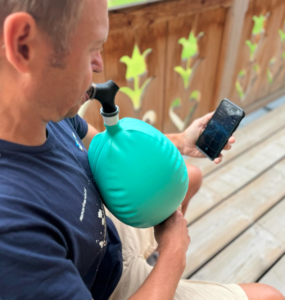
A recent article published in the Frontiers of Physiology is the first of its kind to compare the training effects of Isocapnic Respiratory Muscle Training (RMT), using the Isocapnic Breathe Way Better (BWB) device, against other respiratory training devices.
This study, was a randomized control trial, and specifically targeted well-trained triathletes. It described the use of BWB as a training tool and labelled that training as Voluntary Isocapnic Hyperpnoea (VIH). The study compares the BWB to other devices that do not control carbon dioxide levels. These other devices collectively fall under the descriptive term in the paper as Inspiratory Pressure Threshold Loading (IPTL) devices which means all they do is provide resistance to your breathing and do not control CO2 levels, like the BWB does.
A number of markers were measured before and after training in a group of 16 well trained triathletes, consisting of 9 males and 7 females. These included intercostal muscle oxygenation during exercise and in recovery, maximum and average heart rates (HR), lactate levels and training loads.
The findings were detailed very well in the paper, but it is the summary of the conclusions that is most interesting. While both devices induced a training load, only the BWB device did so without the negative side effects of headache, dizziness and disruptions in blood chemistry.
The implications of this study are a confirmation that is not surprising to us, as our device mimics the original training protocols in the landmark studies in the late 1980’s and early 90’s that showed isocapnic respiratory training as a valid method for challenging the respiratory muscular system. The implied conclusion of these landmark studies was that if we can train the respiratory system, just as we do other muscle groups, we can stave off fatigue, and improve performance.
Fundamentally, this latest study confirms that training with the Isocapnic BWB, if done correctly, will illicit training stimulus. Like any barbell, bike or treadmill, which can be employed to assist with training, the BWB device can help you gain strength, coordination, and endurance. BWB is specifically designed to target your diaphragm and other respiratory muscles, to help improve your health and performance of any sport.
-Dr. Andrew Sellars
See the full study by T. Kowalski, et al. here:
https://www.frontiersin.org/articles/10.3389/fphys.2023.1264265/full



